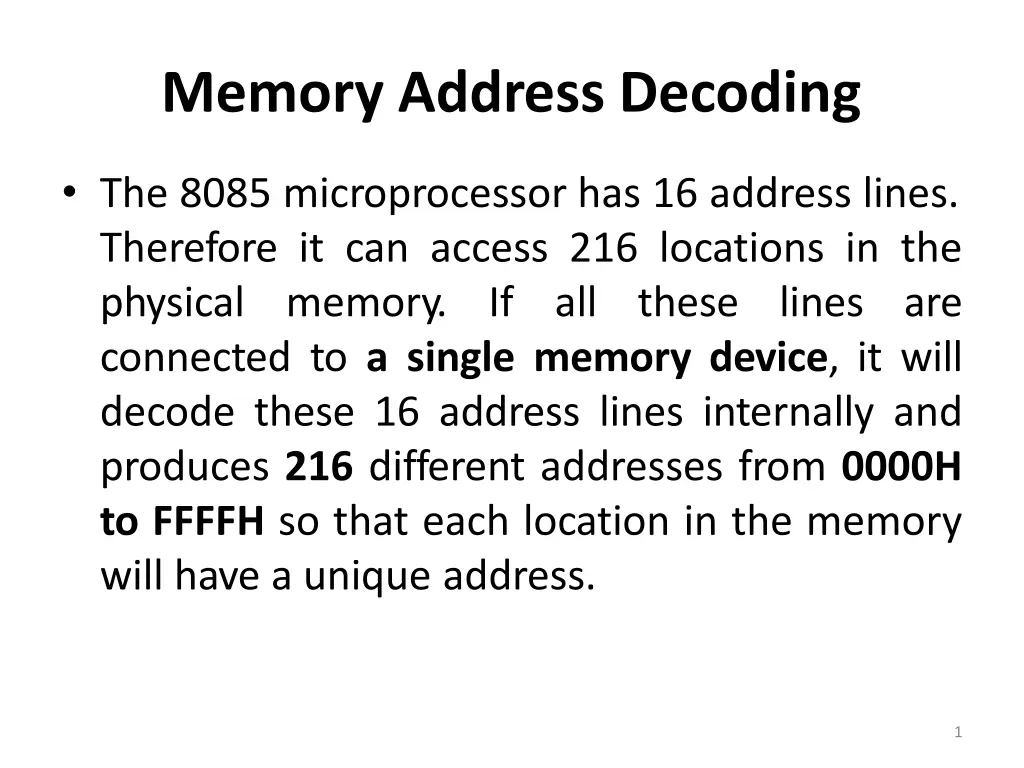
Memory Address Decoding in 8085 Microprocessor
Learn how the 8085 microprocessor utilizes 16 address lines to access 216 memory locations. Explore the use of a 74LS138 address decoder to generate chip select signals for memory blocks, along with interfacing RAM and ROM memory types. Discover the internal decoding process and the differences in handling EPROM.
Download Presentation

Please find below an Image/Link to download the presentation.
The content on the website is provided AS IS for your information and personal use only. It may not be sold, licensed, or shared on other websites without obtaining consent from the author. If you encounter any issues during the download, it is possible that the publisher has removed the file from their server.
You are allowed to download the files provided on this website for personal or commercial use, subject to the condition that they are used lawfully. All files are the property of their respective owners.
The content on the website is provided AS IS for your information and personal use only. It may not be sold, licensed, or shared on other websites without obtaining consent from the author.
E N D






















